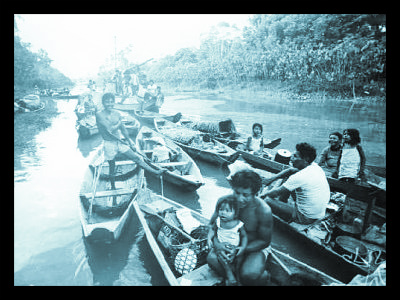New findings in tuberculosis among children could mean that diagnosing the disease could be faster, cheaper and more effective for the millions of people infected by the disease each year.
Tuberculosis (TB) is the second largest killer due to a single infectious agent worldwide, only following HIV/AIDS, and is the leading killer of people with HIV. The ones most affected by the disease are low to middle-income countries, where upwards of 95 percent of TB deaths occur.
Developing countries where malnutrition and compromised immune systems affect the overwhelming majority see the most cases of TB. Even though all groups are at risk, children and young adults are at a greater risk of contracting the disease.
The disease is very difficult to diagnose in children — the early symptoms of TB are also present in dozens of other illnesses — and by the time a positive diagnosis is reached, the disease has already spread throughout the lungs, brain and other organs.
In 2012 alone, there were 530,000 cases of TB in children, and out of the children who were HIV-negative, 74,000 died of the disease because of late and improper diagnosis.
A better diagnosis is needed so that doctors can start treating TB earlier (in its early stages) for better chances of overcoming the disease and so children who show false positives for TB do not need to go through unnecessary treatment.
Health staff in several poor countries have been using a standard test for TB which has failed 93 percent of the time, showing false negatives, leaving thousands of infected children untreated.
Recently, after seven years of study and examining the blood of 2,800 children, an international team of researchers discovered that TB can be positively identified by examining 51 genes.
Over 80 percent of cases were discovered positive for TB by examining this specific gene signature. Researchers examined the blood samples to see which genes were activated or suppressed in samples testing positive.
It was found that TB could be distinguished from other diseases in 51 of the 30,000 genes that make up the human genome. A “risk score” was developed from the examination of this gene signature, and when tested, over 80 percent of the samples were accurately diagnosed positive for TB. Tests that were found negative ruled out TB as a diagnosis with just as much accuracy.
“Childhood TB is a major problem in African hospitals. An accurate test for childhood TB would be an enormous breakthrough, enabling earlier diagnosis, reducing long hospital admissions for investigation of TB suspects, and limiting the number of children treated inappropriately,” said head researcher Brian Eley. Eley is part of the University of Cape Town and lead the clinical study in South Africa.
Early, accurate diagnosis of TB would lead to reducing deaths related to TB in children. The discovery of what these 51 key genes demonstrate in relation to TB will help lead the way to a significant global decrease in the disease that currently affects millions.
— Jerilynn Haddow

